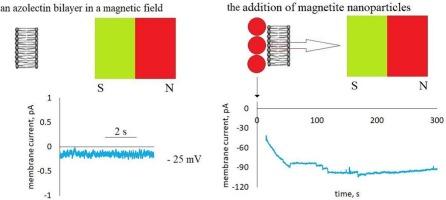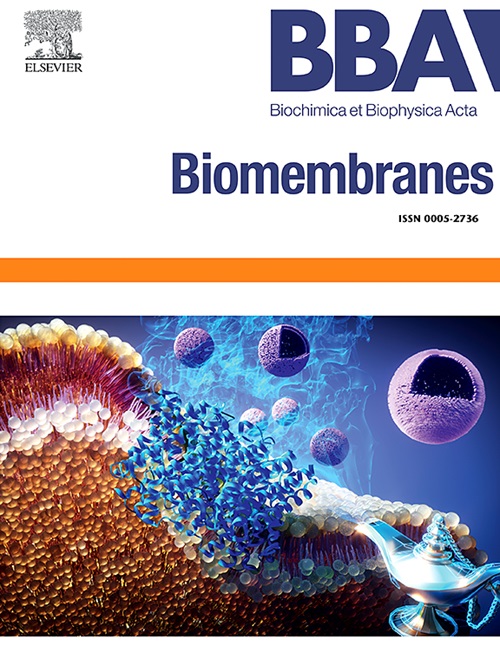Effect of colloidal magnetite (Fe3O4) nanoparticles on the electrical characteristics of the azolectin bilayer in a static inhomogeneous magnetic field
Abstract
This work is devoted to the study of the combined effects of applied magnetic field and MNPs on the electrical characteristics of bilayer lipid membranes. We present results of the study of electrical parameters of azolectin membranes in a static inhomogeneous magnetic field at the one-sided addition of positively charged quasi-spherical superparamagnetic magnetite nanoparticles with a diameter of about 4 nm. The magnet was located at different distances from the membrane, and the magnetic field attracted the nanoparticles to the membrane surface with different strengths. We observed three pronounced effects that depended on the external magnetic field. Firstly, after addition of nanoparticles in a magnetic field, the conductance of the membranes increased. A smooth increase in conductance was accompanied in some cases by the appearance of current jumps, which can be associated with the formation of through pores with a radius of no more than 1 nm. The conductance increased with increasing magnetic field gradient. Secondly, at zero command voltage, a negative current through the membrane was observed. Although our experiments did not allow us to unambiguously determine which particles create this current, we believe that this current is associated with the penetration of particles through the membrane. This effect intensified with increasing magnetic field gradient. Thirdly, we observed a sharp change in the nonlinear dependence of capacitance on voltage associated both with the change in the surface potential of the azolectin membrane and with the effect of MNP binding to the membrane surface on the apparent membrane capacitance.


 求助内容:
求助内容: 应助结果提醒方式:
应助结果提醒方式:


